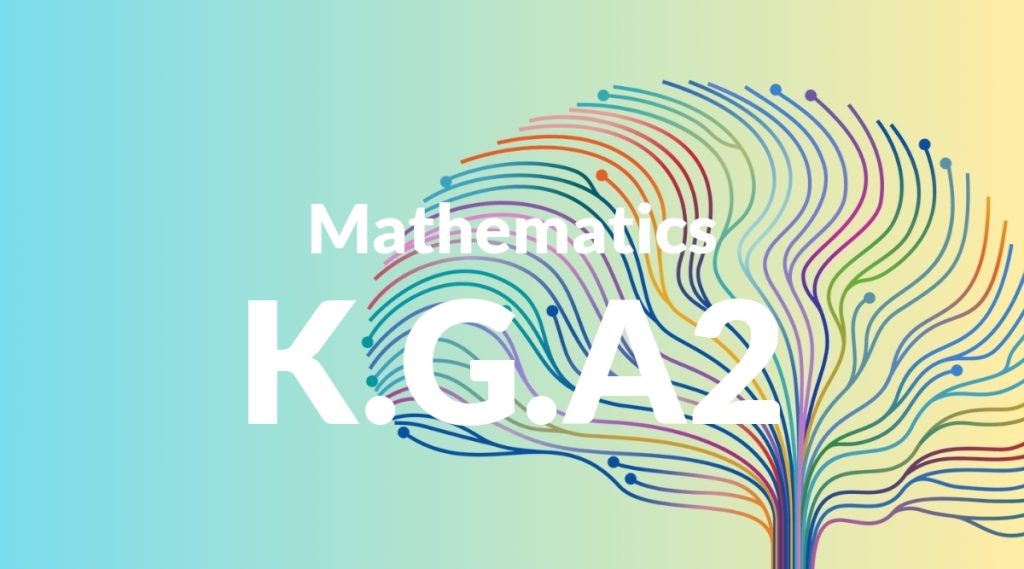Standard: K.G.A2 – Correctly name shapes regardless of their orientations or overall size.
Grade level: Kindergarten
Subject: Mathematics
Domain: Geometry
Teacher Overview
This standard focuses on helping students correctly name common shapes regardless of their orientation or size. This is an important foundational skill in geometry, as it helps students understand that shapes maintain their identity despite transformations. Mastery of this standard sets the stage for more complex geometric concepts in later grades. Students should be familiar with the names and basic characteristics of common shapes, such as circles, squares, triangles, and rectangles. They should also have experience identifying these shapes in their environment.
After mastering this standard, students will move on to comparing and contrasting different shapes, understanding their properties, and exploring symmetry.
Common Misconception 1
A common misconception is that a shape changes its identity when it is rotated or flipped. For example, a rotated square might be mistaken for a different shape.
Intervention 1
Use hands-on activities with shape manipulatives. Rotate and flip shapes while consistently naming them to reinforce that the shape’s identity does not change.
Common Misconception 2
Another misconception is that the size of a shape affects its identity. Students might think a small triangle is different from a large triangle.
Intervention 2
Present various sizes of the same shape and engage students in matching and naming activities to emphasize that size does not alter the shape’s identity.
Prerequisite Knowledge
Students should be familiar with basic shapes such as circles, squares, triangles, and rectangles. They should also understand the concept of shape names and be able to recognize these shapes in their environment.
Subsequent Knowledge
Students will develop the ability to compare and contrast different shapes, understand the properties of shapes, and begin to explore the concept of symmetry.
Instructional Activities
- Shape scavenger hunt
- Drawing and naming shapes in different orientations
- Using shape manipulatives to explore rotations and flips
- Sorting shapes by type regardless of size
- Creating shape collages with various sizes and orientations




